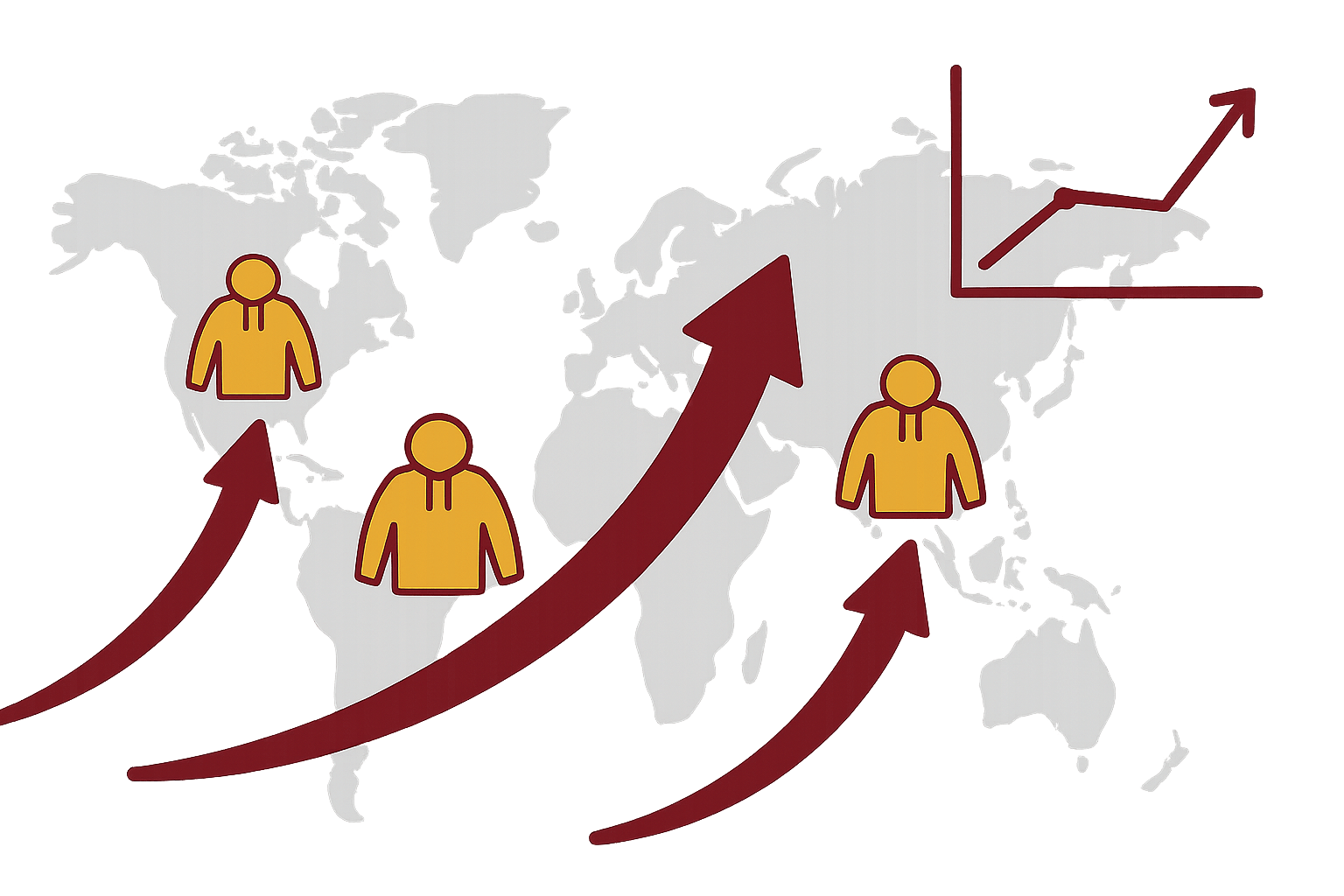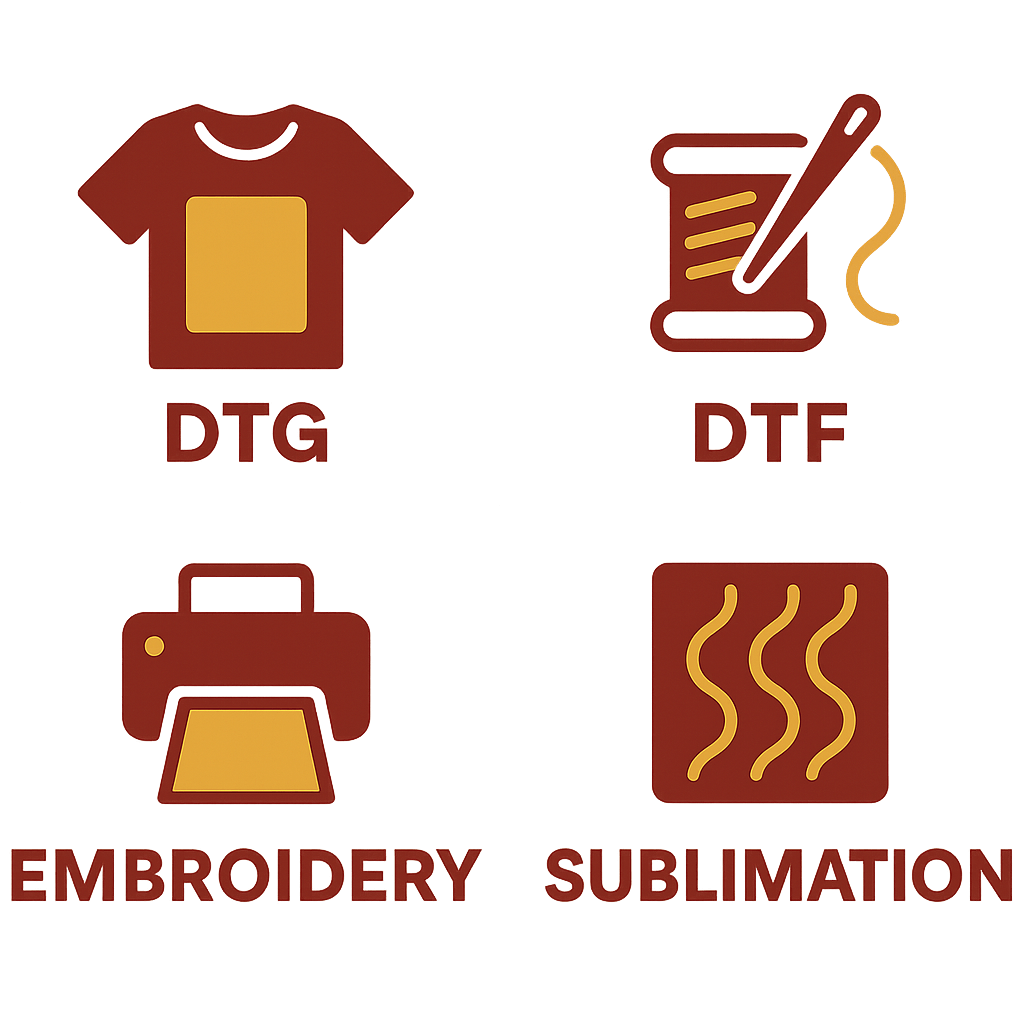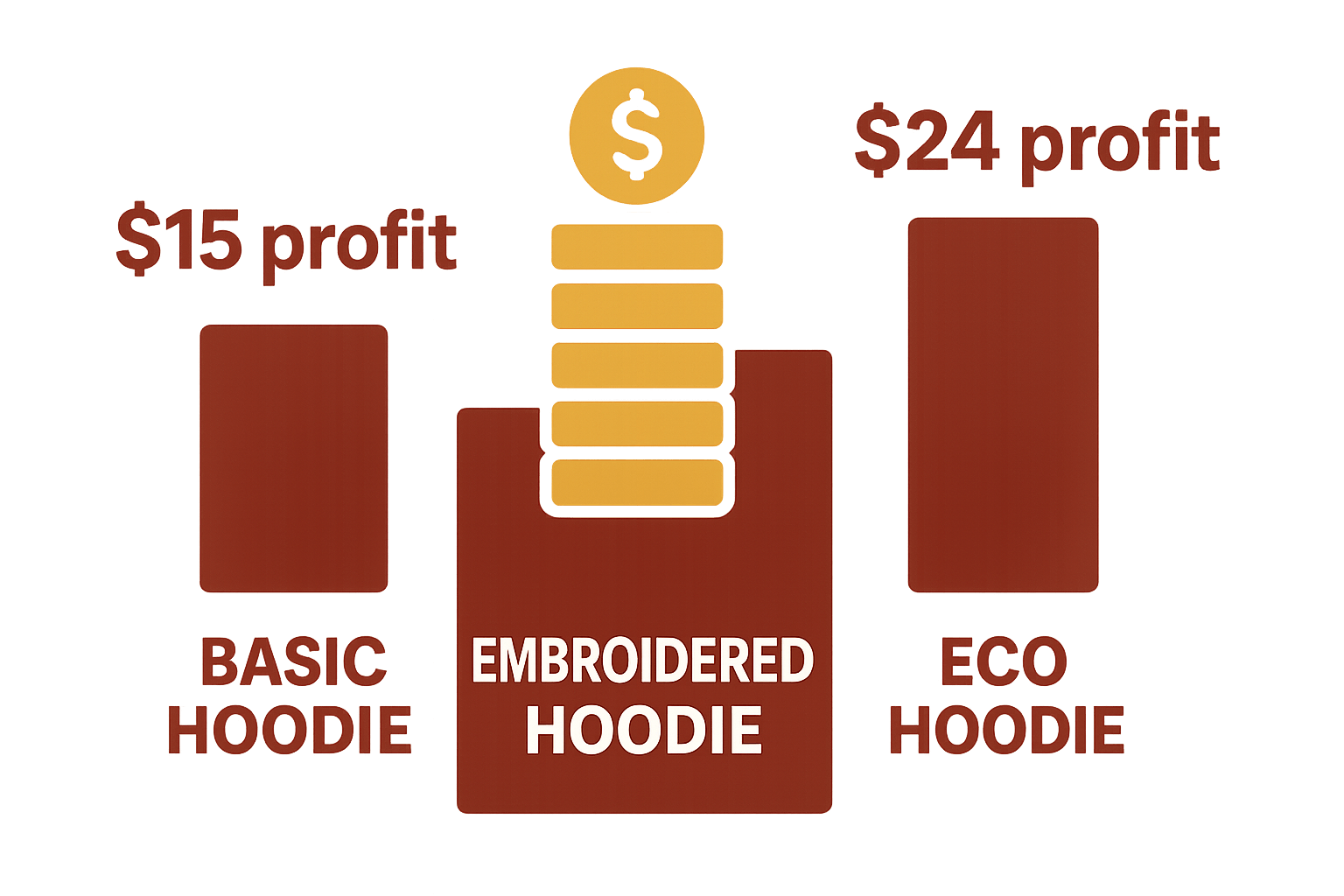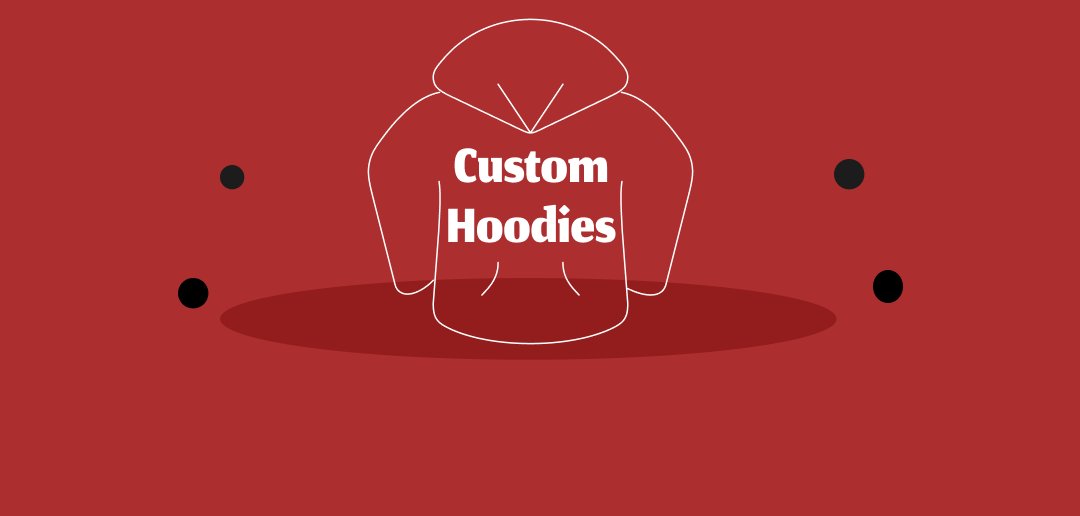From garage startups to major eCommerce brands, almost every print on demand success story begins with one thing a hoodie.
Few products balance comfort and creativity like a custom hoodie. In 2025, it’s more than clothing — it’s wearable identity. Print on demand makes that identity shippable in a day, giving creators and small businesses the chance to launch global hoodie lines without holding inventory.
This guide covers everything you need to know — from choosing your POD platform and designing your first hoodie to setting prices and making your first sale.
Why Custom Hoodies Dominate the POD Market

According to Grand View Research, the global print-on-demand market is expanding by more than 23% annually. Apparel generates nearly 40% of all POD revenue, and hoodies remain among the top-selling items.
They blend comfort with expression. A hoodie can be minimalist or bold, athletic or luxury — and unlike most clothing, it sells year-round.
Top hoodie niches in 2025 include:
- Streetwear: oversized fits, text graphics, and limited drops
- Gaming and communities: subtle logos and in-jokes
- Eco-friendly designs: recycled materials and sustainable inks
- Motivational and lifestyle brands: short, meaningful slogans
Editor’s Tip: A hoodie is a personal item. Build designs around stories or values people care about, not trends that disappear in months.
Step 1 – Pick the Right Print-on-Demand Platform
Your print-on-demand partner isn’t just a supplier — it’s your silent brand ambassador. Every print, label, and delivery speaks for your business.
Leading Platforms for Custom Hoodies
| Platform | Strength | Best For |
|---|---|---|
| Printify | Wide supplier network, flexible pricing | Beginners optimizing cost |
| Printful | Consistent quality and advanced branding | Premium products |
| Apliiq | Embroidery, woven labels, private branding | Fashion and streetwear |
| Gelato | Global network and fast regional shipping | International sellers |
| SPOD / Gooten | Fast fulfillment and easy setup | Quick launches |
Author’s Hint: Combine a cost-efficient supplier like Printify with a premium one like Apliiq for balance and reliability.
Also see Printify vs Gelato: Don’t Choose Until You Read This for a full comparison.
Step 2 – Choose Your Hoodie Blank & Print Method

The blank you choose determines how your hoodie feels, lasts, and sells.
Fabric Options
- Cotton fleece: soft, breathable, easy to print
- Poly-cotton blends: balanced comfort and durability
- Recycled fabrics: the 2025 favorite for eco hoodies
Print Methods
- DTG (Direct-to-Garment): excellent for detailed color artwork
- DTF (Direct-to-Film): vibrant and durable prints
- Embroidery: premium appearance and higher perceived value
- Sublimation: full-coverage designs on compatible materials
Tip: Start with DTG hoodies on a cotton blend. Once sales grow, add custom embroidered hoodies for premium buyers.
Learn more about branding upgrades in Apliiq Print on Demand Review.
Step 3 – Design Custom Hoodies That Actually Sell
A strong design transforms a product into a story.
Design Trends for 2025
- Minimalist typography
- AI-assisted digital artwork
- Clean sleeve or hood placement
- Vintage or textured streetwear looks
Tools & Workflow
Create at 300 DPI using Canva, Kittl, Illustrator, or Figma.
Use Placeit or built-in platform mockups for professional previews.
Author’s Hint: Simplicity sells — a single powerful idea beats a busy layout every time.
Step 4 – Set Prices and Profit Margins

Never underprice your work. Custom implies value.
| Hoodie Type | Base + Print | Shipping | Retail | Approx. Profit |
|---|---|---|---|---|
| Basic DTG Hoodie | $18 | $7 | $40 | $15 |
| Premium Embroidered | $25 | $8 | $55 | $22 |
| Recycled Eco Hoodie | $28 | $8 | $60 | $24 |
Aim for a 30–50% margin after fees and shipping.
Offer two or three product tiers to reach different customers.
Read more on profit models in Is Print on Demand Worth It?.
Step 5 – Launch Your Store and Start Selling
Recommended Platforms
- Etsy hoodies: best for new sellers with search traffic
- Shopify hoodies: great for long-term brand building
- TikTok Shop: fast exposure for viral designs
Launch Checklist
- Order at least one physical sample
- Write SEO-friendly descriptions
- Add high-resolution hoodie mockups and lifestyle photos
- Include size charts and care info
- Enable reviews early for credibility
Step 6 – Market Your Custom Hoodies
Organic Marketing
- Share behind-the-scenes clips on TikTok and Instagram
- Use Pinterest for inspiration boards
- Ask happy buyers to share real photos wearing your hoodie
Paid Promotion
| Channel | Strength | Best Use |
|---|---|---|
| Micro-influencers | Authentic engagement | Niche growth |
| Facebook Ads | Retargeting traffic | Repeat buyers |
| TikTok Ads | Quick reach | Test small budgets |
Social proof often outperforms ads. Real customer photos build more trust than polished campaigns.
Step 7 – Avoid Common Hoodie Mistakes
- Low-resolution or misaligned artwork
- Overprinting near seams or zippers
- Skipping test orders
- Underpricing or poor product photos
- Launching too many designs too fast
Conclusion – Your First Hoodie Sale Is Closer Than You Think
Your first sale isn’t random — it’s proof that your design and effort connect with real customers.
The hoodie market continues to grow because creativity never fades. Pick one design, launch it, analyze results, and refine. Start today with a single hoodie — you’ll thank yourself in a month.
FAQ – Quick Hoodie Answers
How much does it cost to start selling hoodies?
Around $30–$50 covers your first sample and listings.
What’s the best POD site for hoodies?
Printify or Printful — choose based on your mix of cost and quality.
Embroidery or print?
Start with DTG printing; expand into embroidery as you grow.
Fulfillment time?
3–10 days on average, depending on provider and region.
Can I sell hoodies without a website?
Yes — Etsy or TikTok Shop allow you to start fast without hosting your own site.

